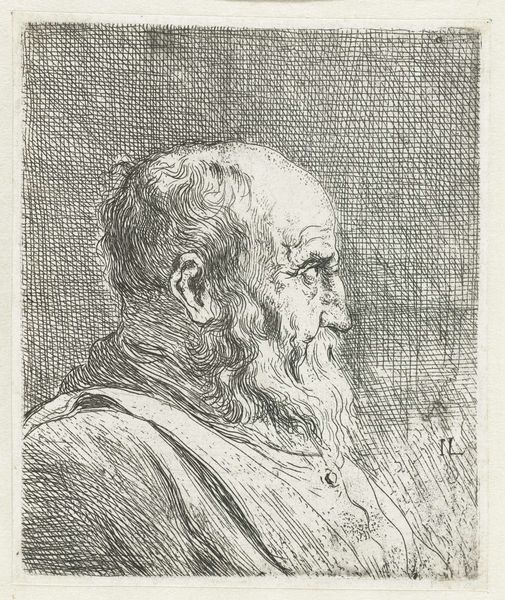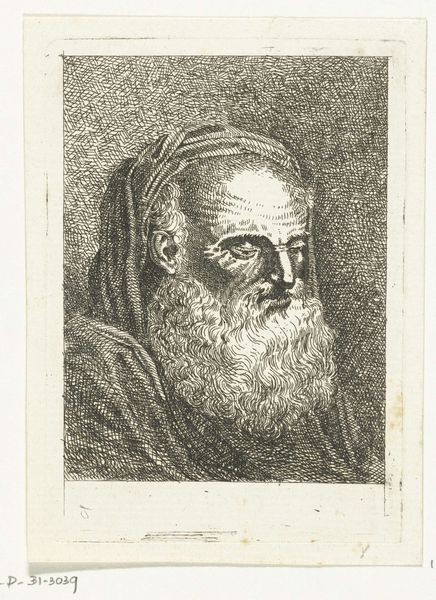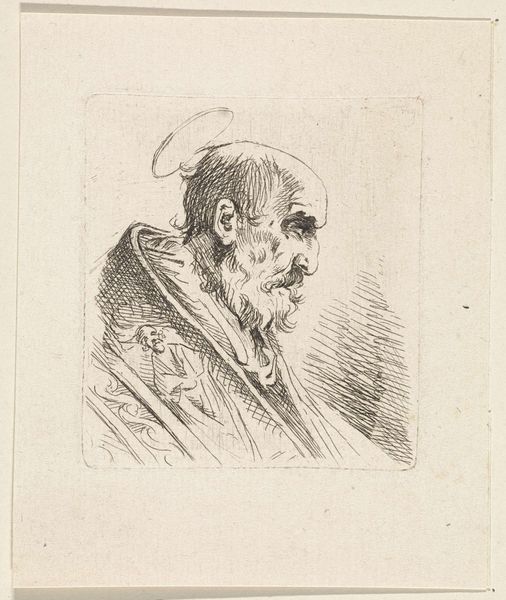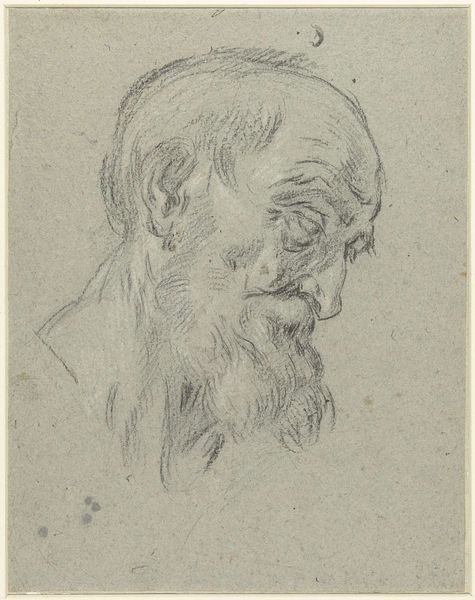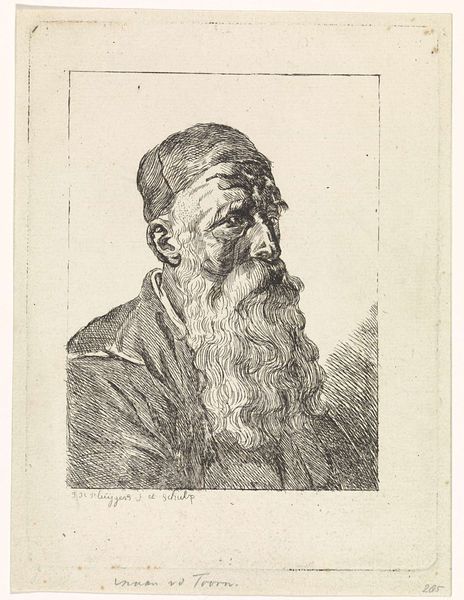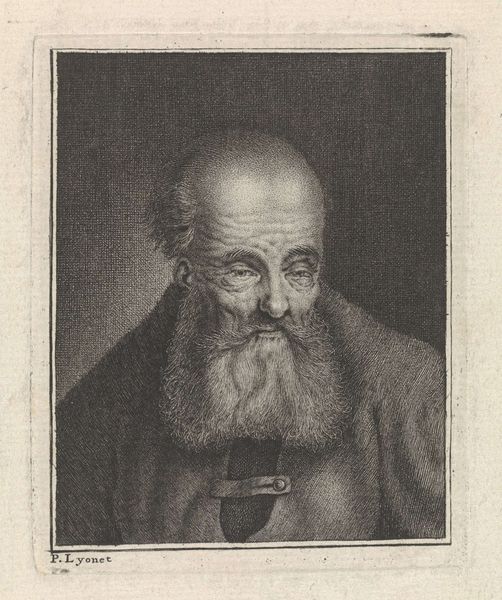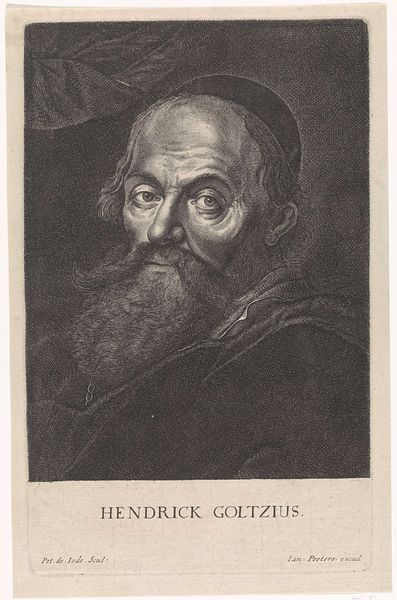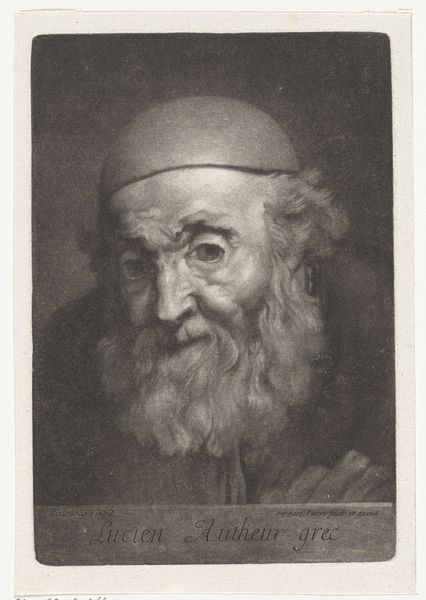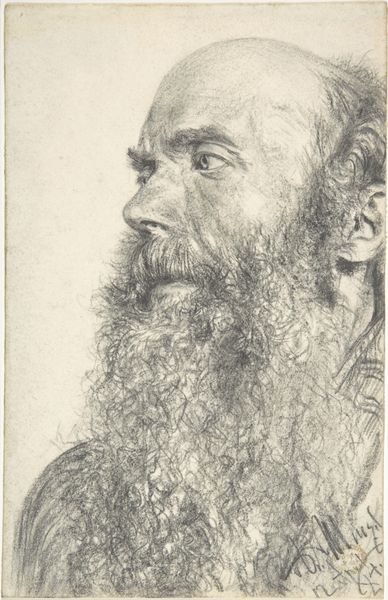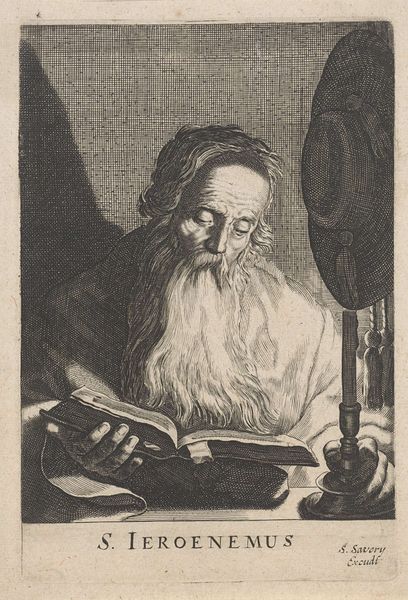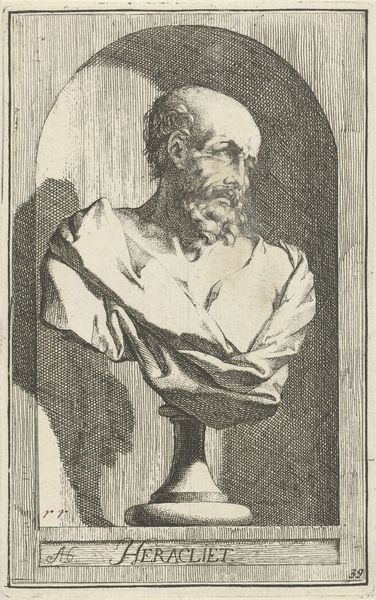
drawing, pencil, charcoal
#
portrait
#
pencil drawn
#
drawing
#
charcoal drawing
#
figuration
#
pencil drawing
#
pencil
#
portrait drawing
#
charcoal
#
realism
Dimensions: height 97 mm, width 87 mm
Copyright: Rijks Museum: Open Domain
Curator: Here we have an intriguing work: "Portret van een grijsaard, en profil," or "Portrait of a Greybeard, in Profile," likely created between 1781 and 1822. It's currently held at the Rijksmuseum, and we believe the artist may be Hermanus Fock. Editor: The immediate impression is one of immense contemplation. The monochrome palette lends a somber, almost severe mood. Notice the granular texture achieved with pencil and charcoal; it gives the figure a tangible weight. Curator: That weight you perceive is intensified by the subject matter. It seems highly relevant to look at ideas around aging and representations of wisdom that historically would have only included men in these conversations. There's an undeniable power dynamic inherent in portraiture of this era. Editor: Absolutely. I'm struck by the technical prowess, however. Look at how Fock has modeled the planes of the face using only subtle variations in tone and the directionality of the hatching. The semiotic construction of light and shadow creates a truly compelling face. Curator: This granular texture adds layers to its understanding. It forces us to consider issues of class and access during a time when artistic representation, especially portraiture, was usually the domain of the elite. I wonder what social implications came into play at that time. How did portraiture impact constructions of social order? Editor: That tension you are discussing plays beautifully into the composition. This stark profile view allows for no direct engagement, heightening that distance, making us examine not just who he was but also what the artistic gesture itself signifies, who had the opportunity to be seen? Curator: These artworks help us unpack ideas of historical identity, so central in our era when notions of who and what is historically seen are finally expanding. Thank you for shedding some light on how you interpret this poignant figure! Editor: It's been enlightening to see where historical context can meet the language of composition.
Comments
No comments
Be the first to comment and join the conversation on the ultimate creative platform.

